Post by petros on Sept 20, 2017 9:20:32 GMT -5
After a longer break, when I did not finish many models, and was mainly concentrating on my family and business, I finally got a model finished.
I finished my General de Saint-Sulpice vignette in 54mm scale.
Figure by Tin Belin, Reality in scale base, wood socket by Diosockel, Nameplate by Schildermaxe, Coin is a copy of a 1814 20 Franc coin. Painting by acrylics and oil, with pigments and flat enamel top coat.
A nobleman by birth, Saint-Sulpice joins the army as a sublieutenant in 1777, becoming a lieutenant-colonel in 1792 in the Army of the Alps. He is then suspended, from September 1793 to May 1795, because of his aristocratic ascendance. Despite the proclamation of the French Consulate, the career of Saint-Sulpice seems to stagnate until 1803, when he is finally promoted to brigadier general. With the proclamation of the Empire, Saint-Sulpice gets a position as Écuyer cavalcadour of the Empress Joséphine.
With the outbreak of the Napoleonic Wars, Saint-Sulpice is given the command of a cuirassier brigade in d'Hautpoul's 2nd heavy cavalry division of the cavalry reserve of the Grande Armée, which he will command between 1805 and 1807. At the battle of Eylau in 1807 Saint-Sulpice is wounded, but a week later, on the 14 of February, he gets promoted to general of division and takes command of the 2nd heavy cavalry division, replacing d'Hautpoul, who had died of his injuries. Named count of the Empire in 1808, he fights in most of the major engagements of the Fifth Coalition in 1809: Abensberg, Eckmühl, Ratisbon, Aspern-Essling and Wagram. During the French invasion of Russia, Saint-Sulpice is given command of the dragoon regiment of the Guard. The next year, in March 1813, he is named governor of the castle of Fontainebleau but then is called to serve in the Grande Armée again for the War of the Sixth Coalition, fighting in Saxony. In 1813-1814 he serves as a commander of 4th Honor Guard Regiment, a regiment paid and manned by noble and rich families, and attached to imperial guard. In 1814, as the fighting continued, this time on French soil, Saint-Sulpice is assigned to serve under Marshal of the Empire Pierre Augereau, whose orders were to defend Lyon against the invading Allied armies. Retiring from active service, he became a Peer of France in 1831. His name appears on the Arc de Triomphe in Paris.
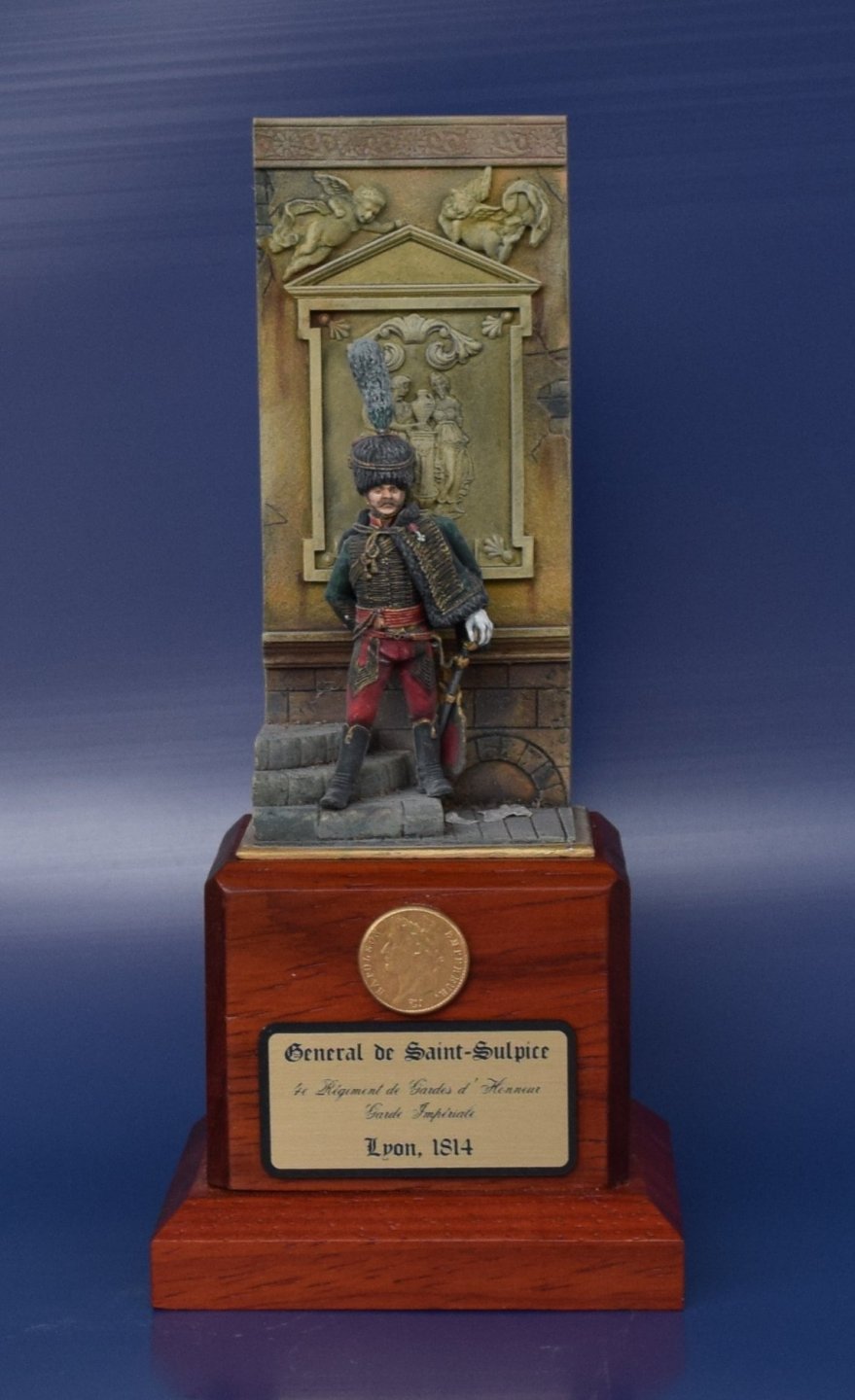
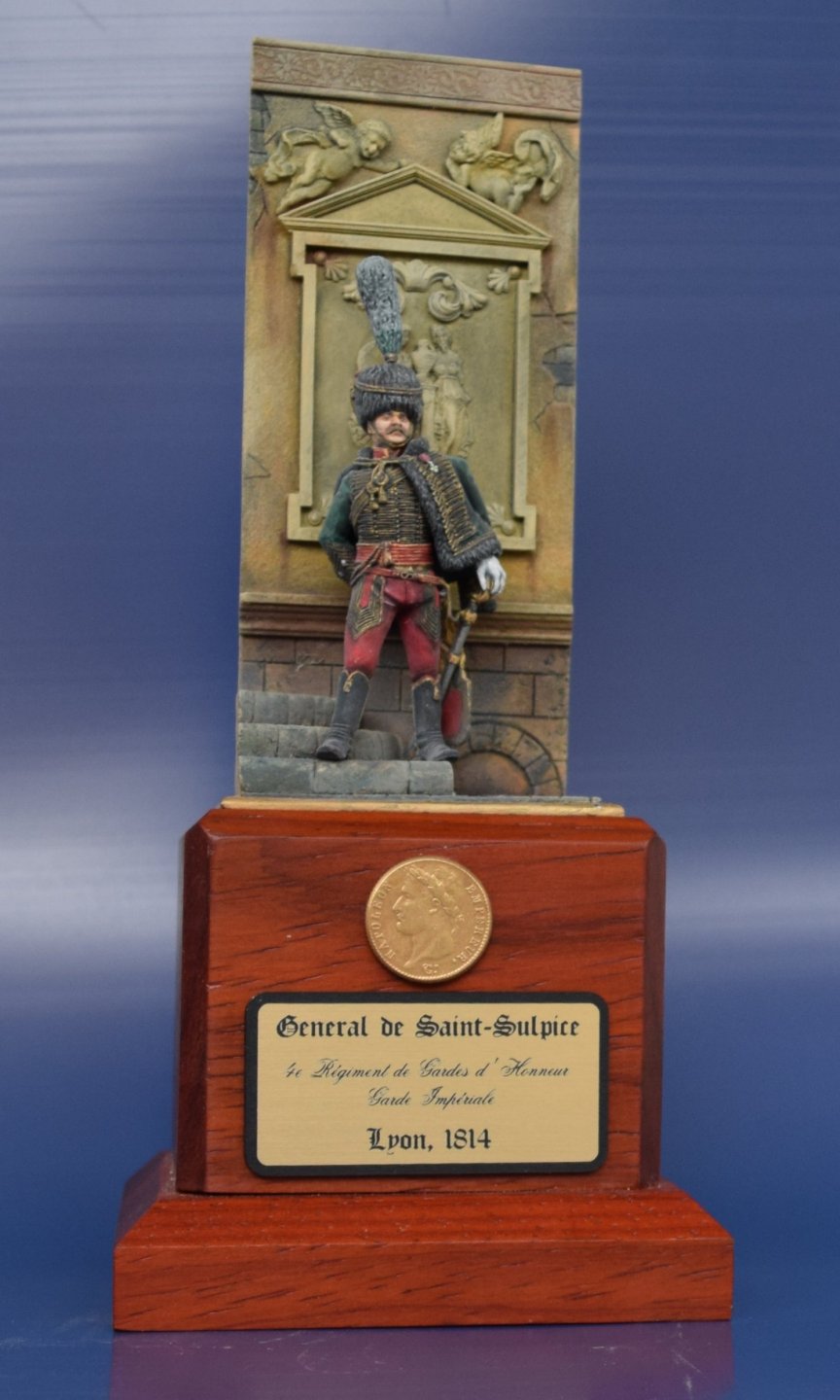
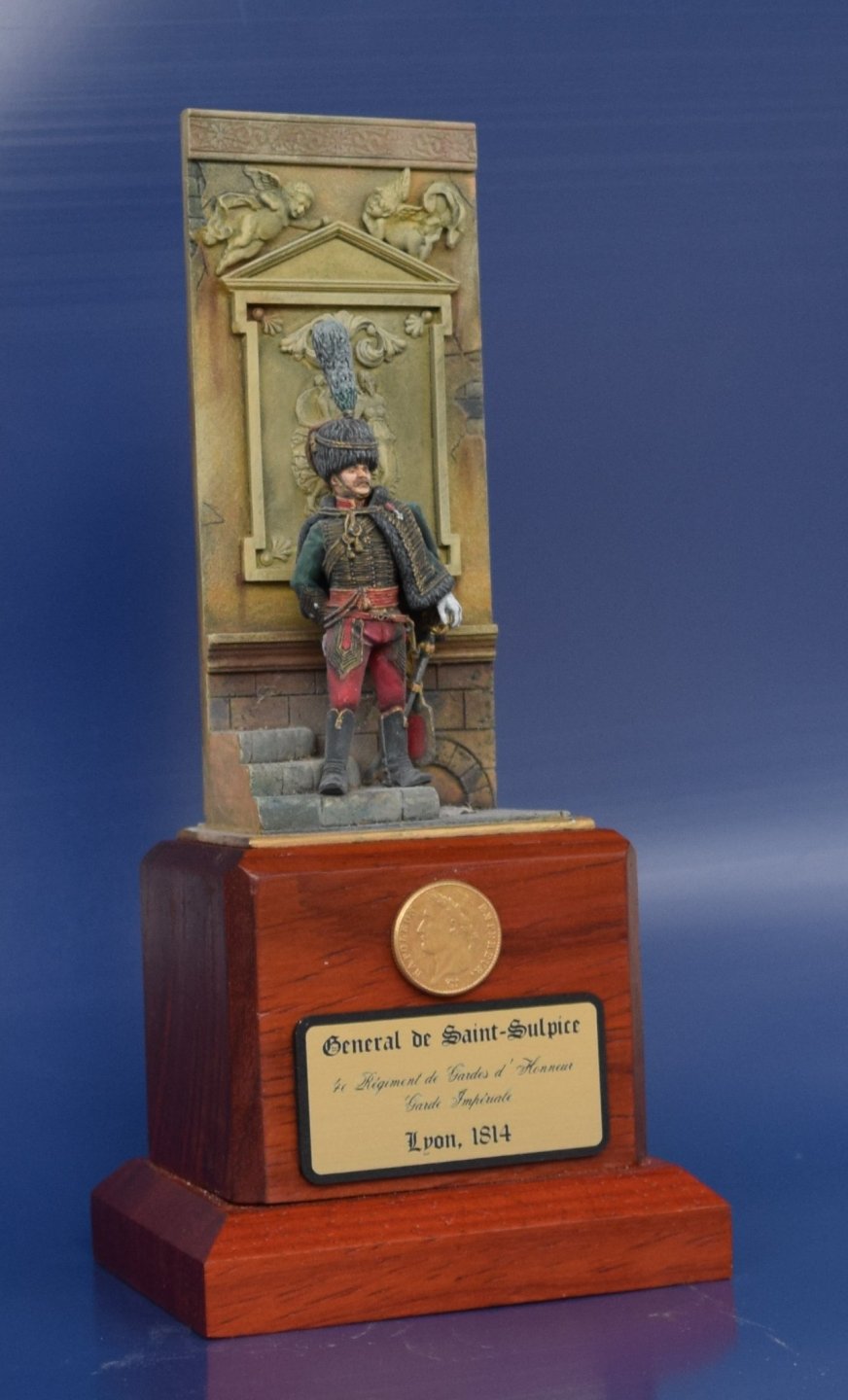
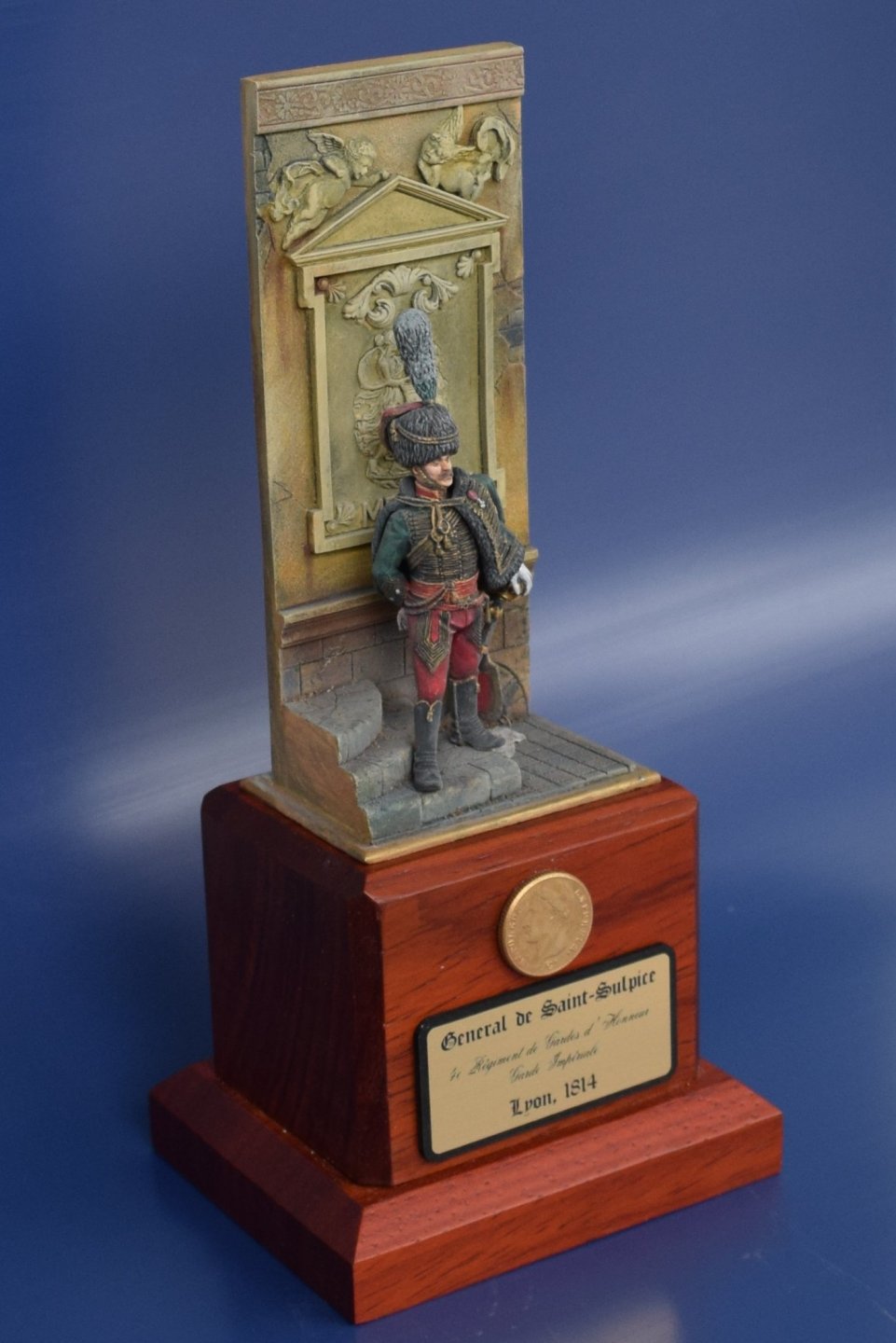
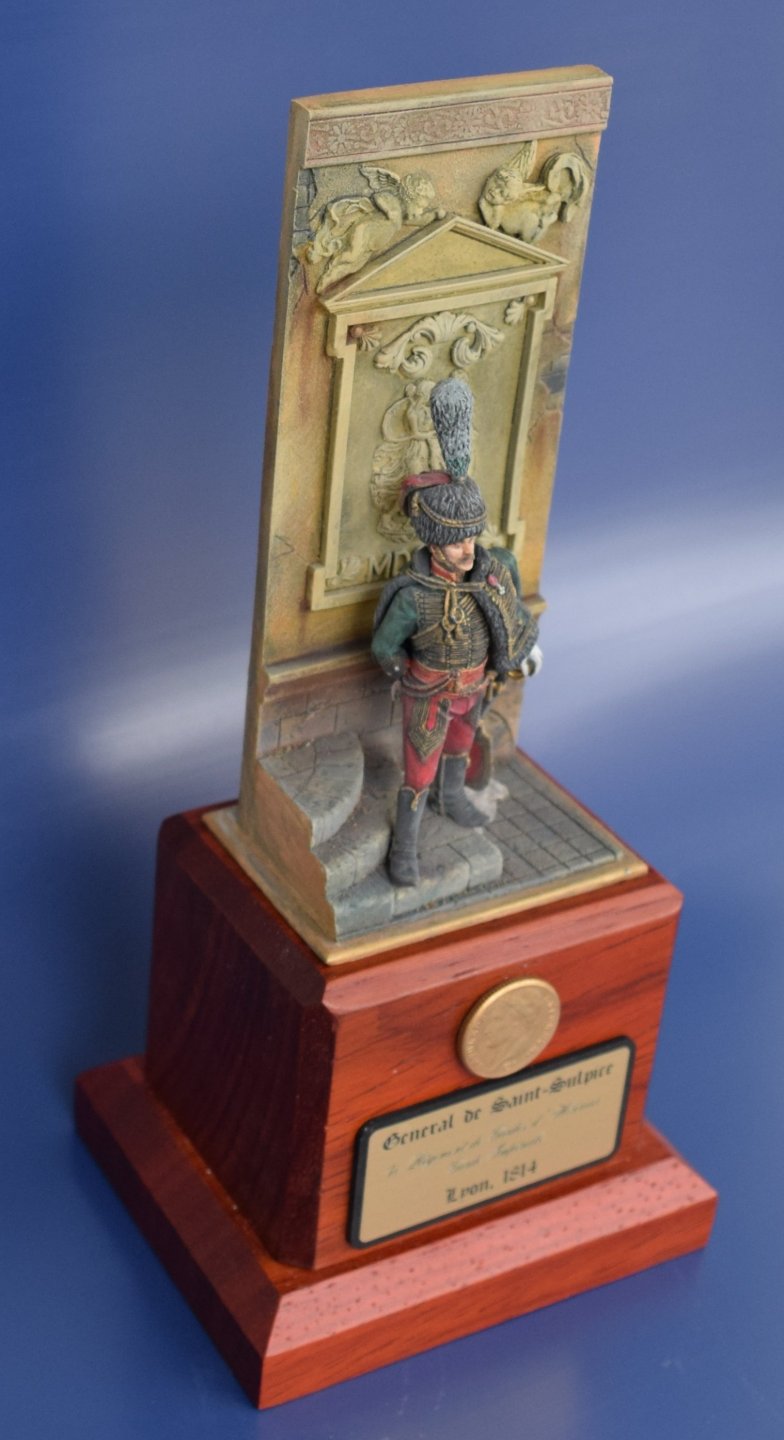
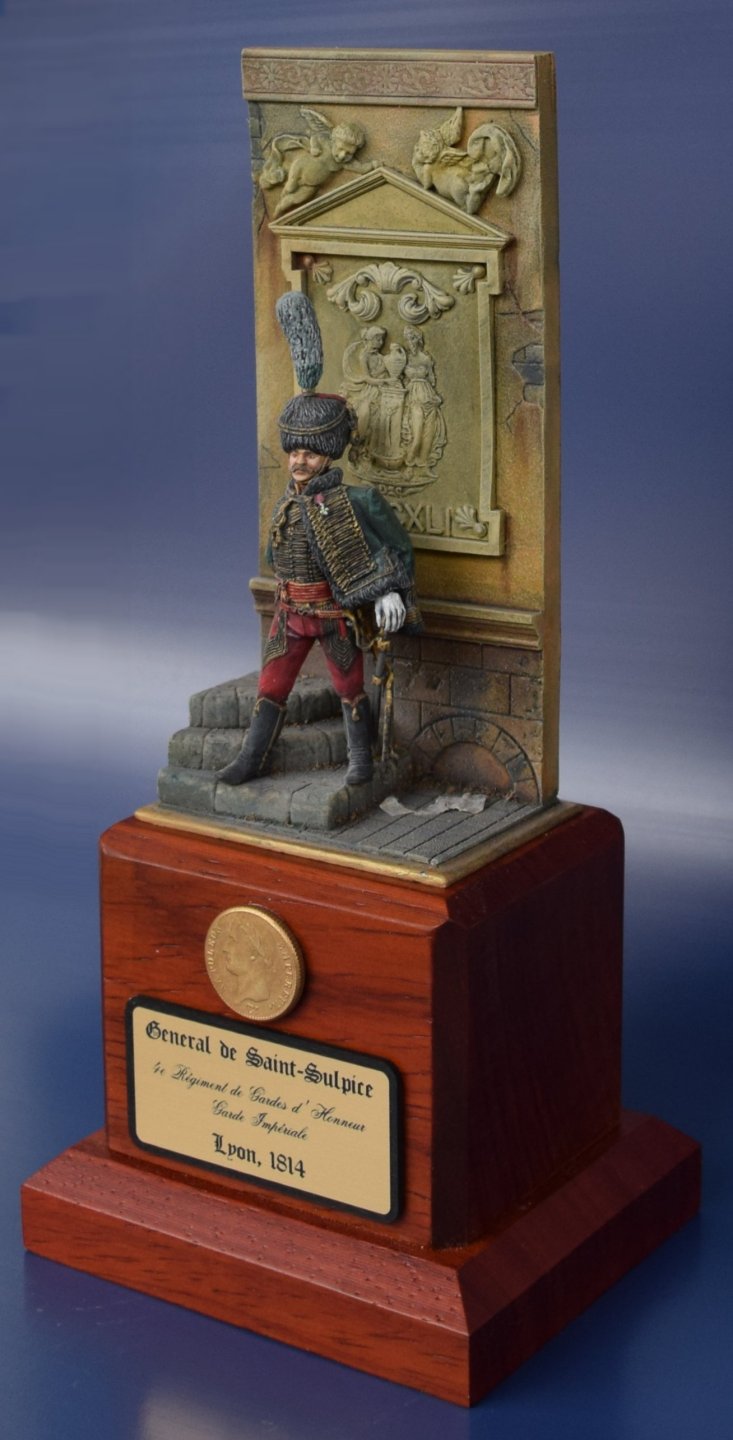
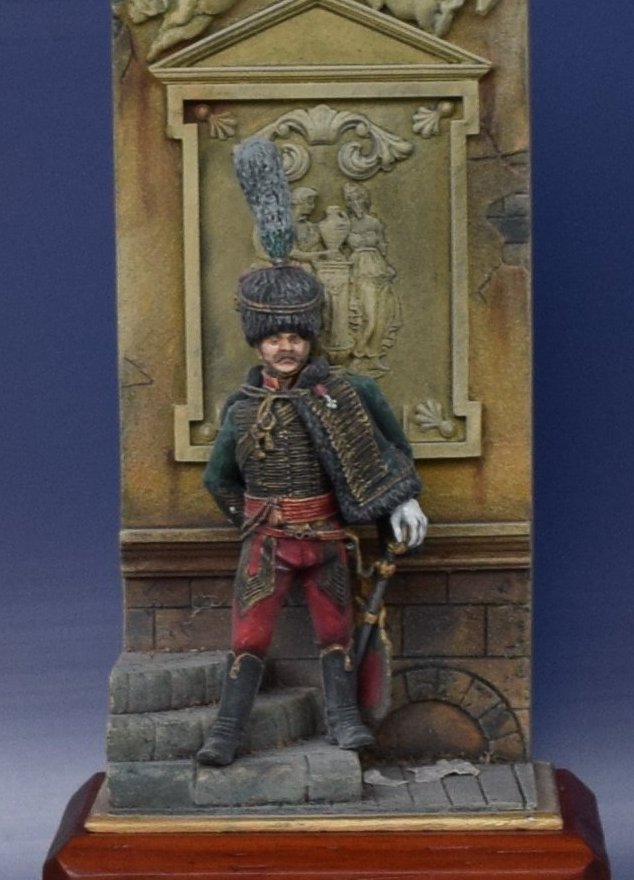
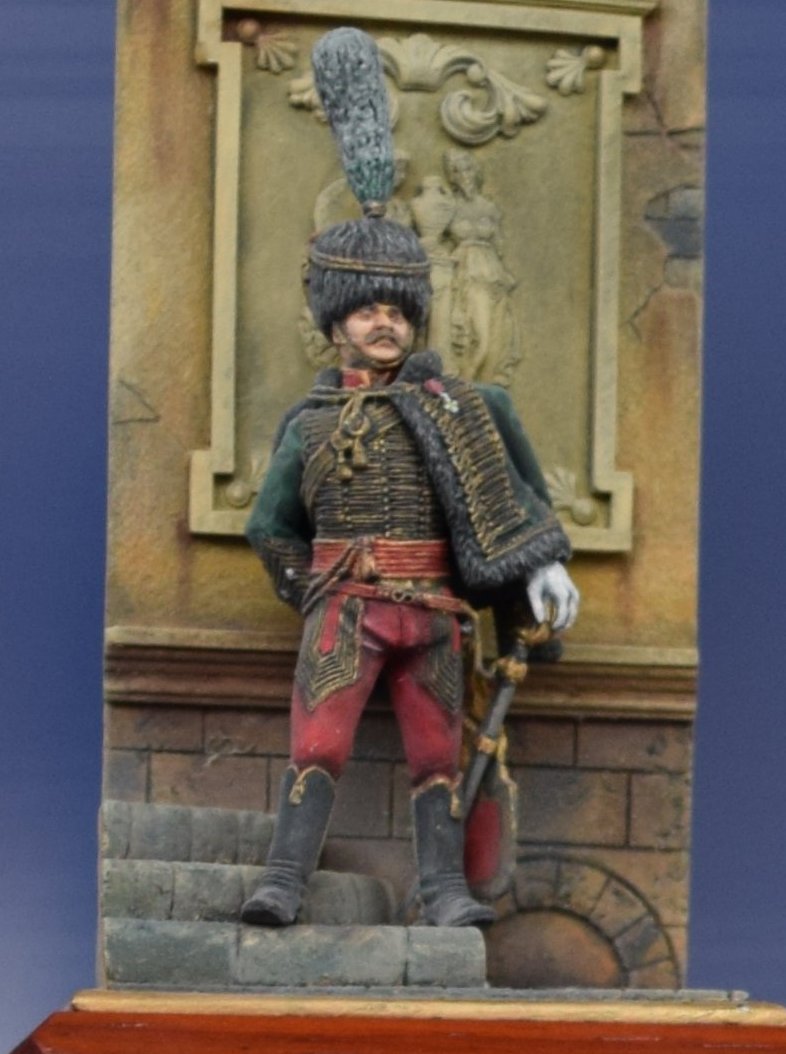
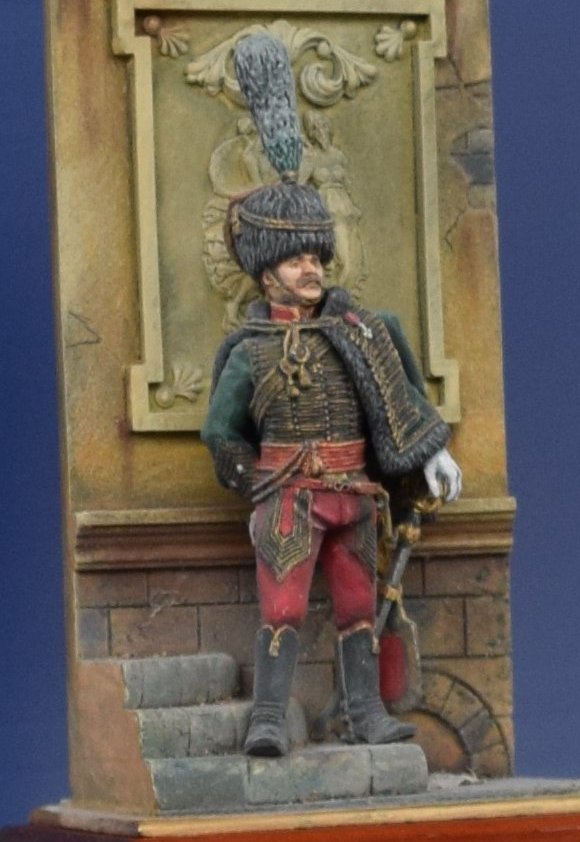
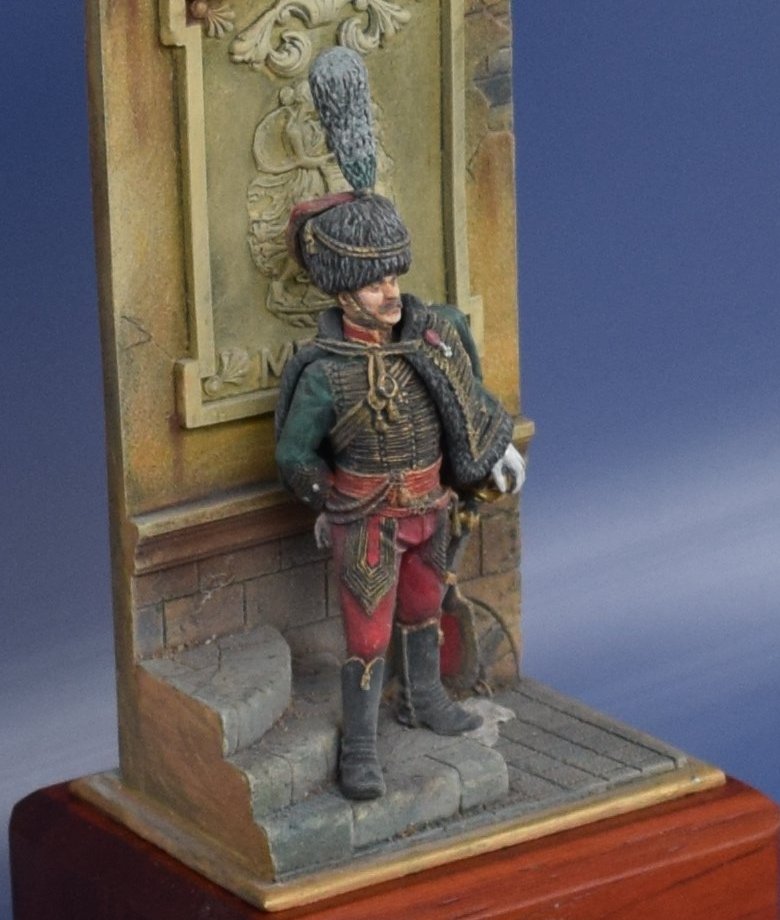
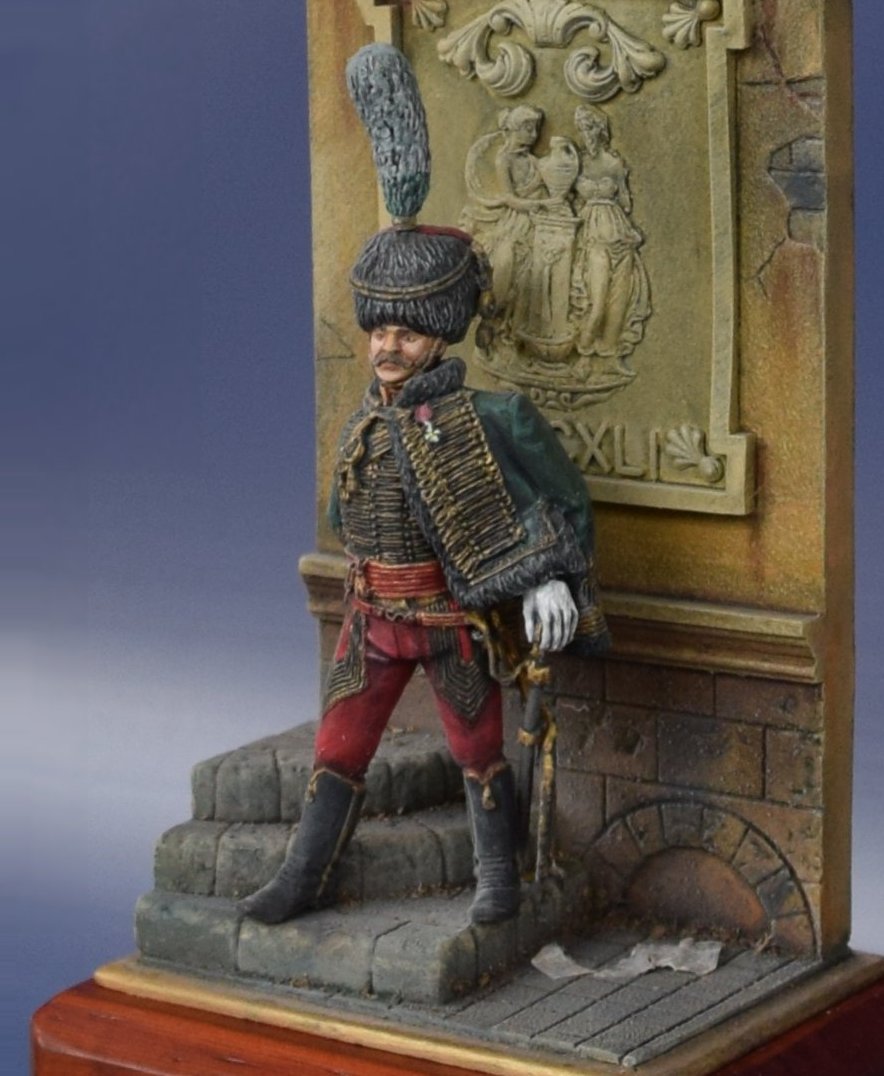
I finished my General de Saint-Sulpice vignette in 54mm scale.
Figure by Tin Belin, Reality in scale base, wood socket by Diosockel, Nameplate by Schildermaxe, Coin is a copy of a 1814 20 Franc coin. Painting by acrylics and oil, with pigments and flat enamel top coat.
A nobleman by birth, Saint-Sulpice joins the army as a sublieutenant in 1777, becoming a lieutenant-colonel in 1792 in the Army of the Alps. He is then suspended, from September 1793 to May 1795, because of his aristocratic ascendance. Despite the proclamation of the French Consulate, the career of Saint-Sulpice seems to stagnate until 1803, when he is finally promoted to brigadier general. With the proclamation of the Empire, Saint-Sulpice gets a position as Écuyer cavalcadour of the Empress Joséphine.
With the outbreak of the Napoleonic Wars, Saint-Sulpice is given the command of a cuirassier brigade in d'Hautpoul's 2nd heavy cavalry division of the cavalry reserve of the Grande Armée, which he will command between 1805 and 1807. At the battle of Eylau in 1807 Saint-Sulpice is wounded, but a week later, on the 14 of February, he gets promoted to general of division and takes command of the 2nd heavy cavalry division, replacing d'Hautpoul, who had died of his injuries. Named count of the Empire in 1808, he fights in most of the major engagements of the Fifth Coalition in 1809: Abensberg, Eckmühl, Ratisbon, Aspern-Essling and Wagram. During the French invasion of Russia, Saint-Sulpice is given command of the dragoon regiment of the Guard. The next year, in March 1813, he is named governor of the castle of Fontainebleau but then is called to serve in the Grande Armée again for the War of the Sixth Coalition, fighting in Saxony. In 1813-1814 he serves as a commander of 4th Honor Guard Regiment, a regiment paid and manned by noble and rich families, and attached to imperial guard. In 1814, as the fighting continued, this time on French soil, Saint-Sulpice is assigned to serve under Marshal of the Empire Pierre Augereau, whose orders were to defend Lyon against the invading Allied armies. Retiring from active service, he became a Peer of France in 1831. His name appears on the Arc de Triomphe in Paris.























